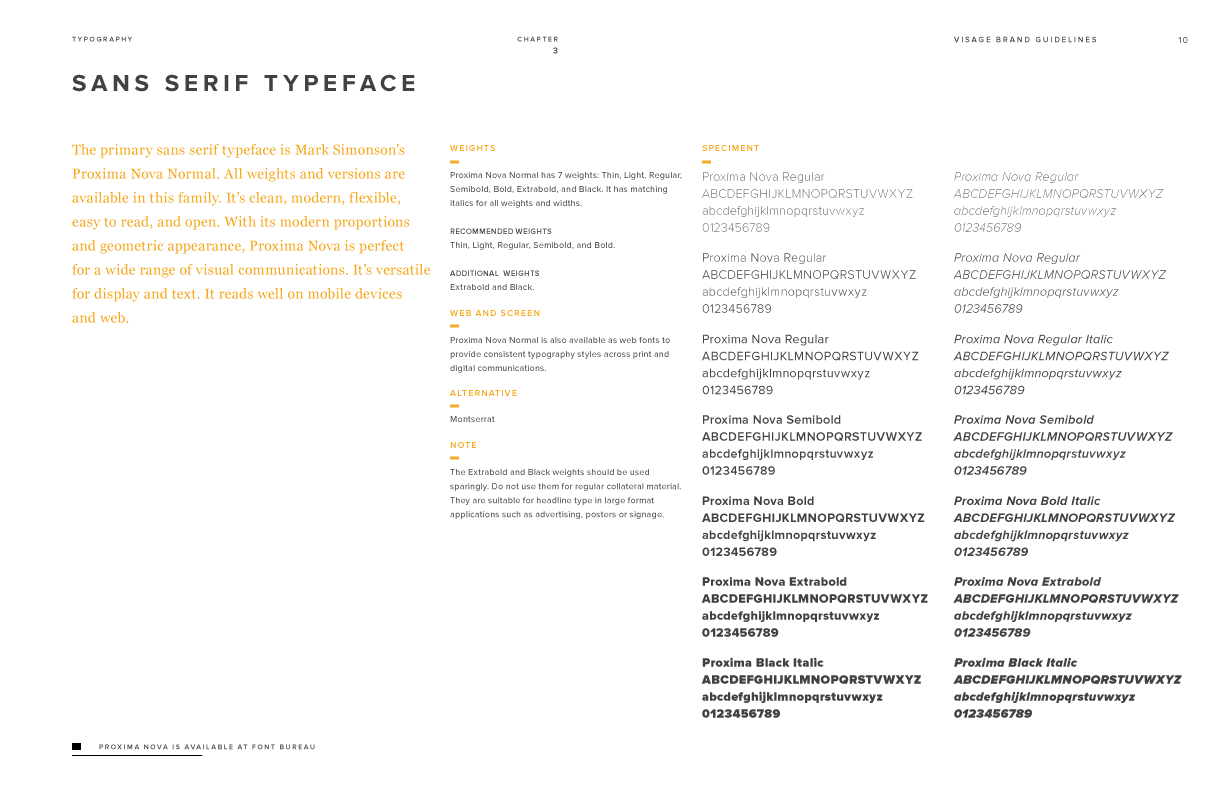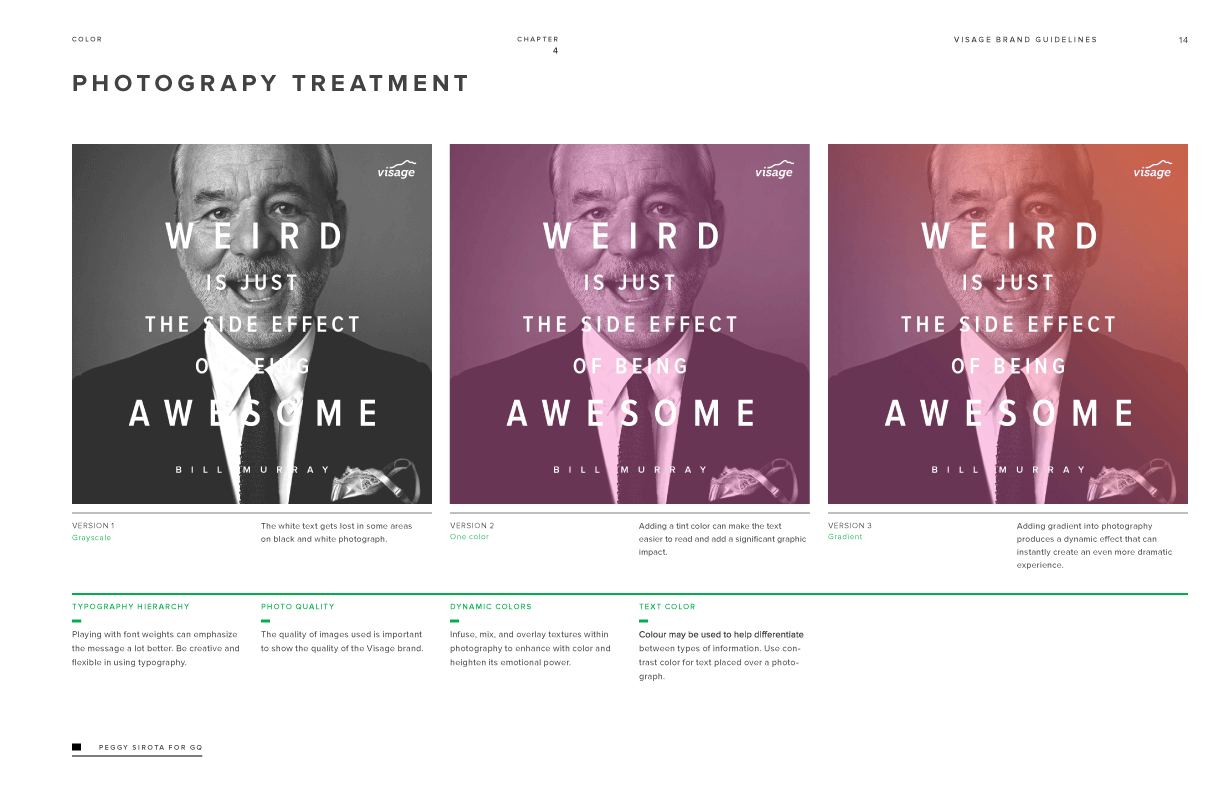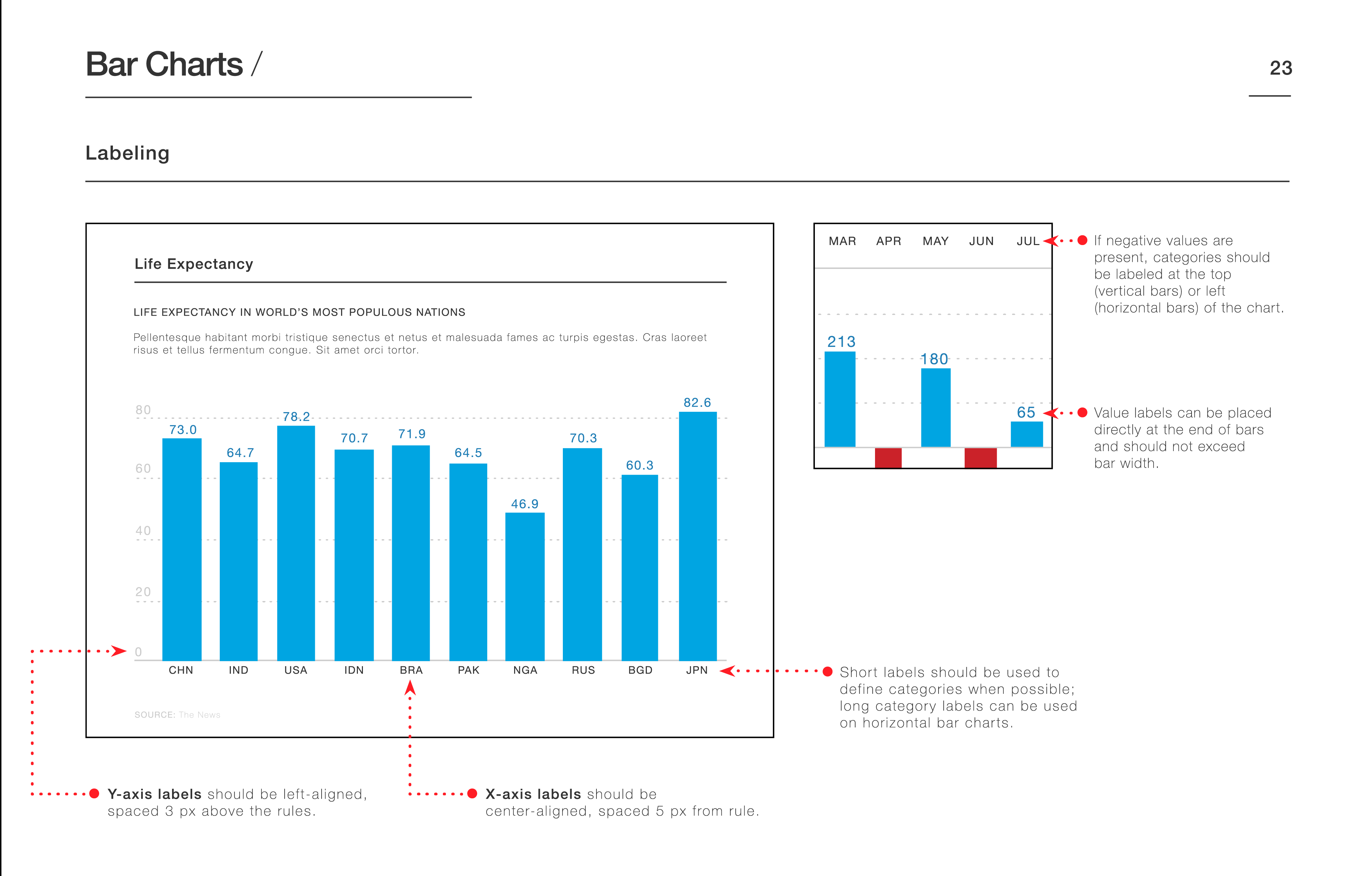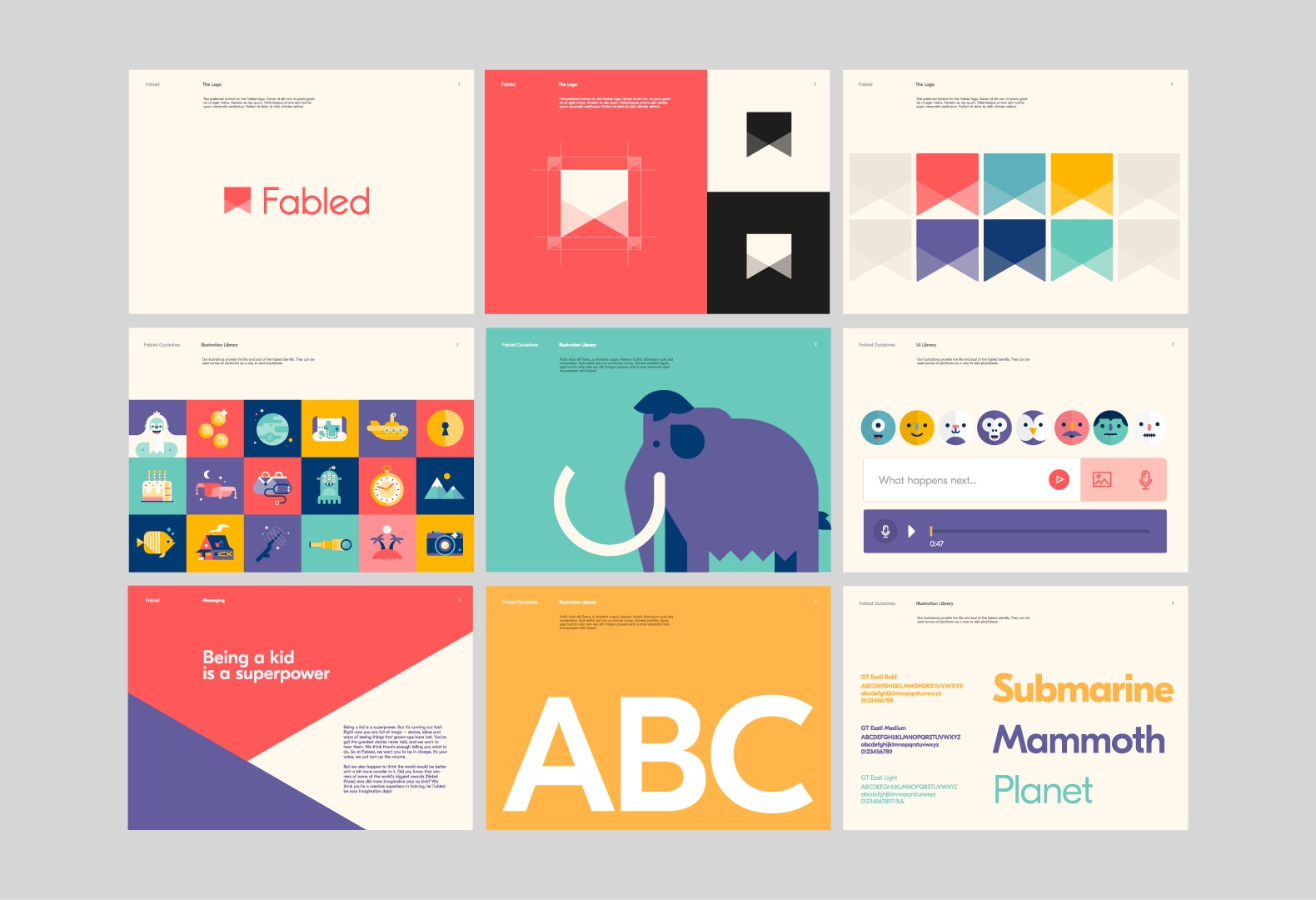|
Getting your Trinity Audio player ready...
|
Have you ever wondered why some brands stick in our minds while others fade into obscurity? It all comes down to their brand identity. A strong brand identity can make all the difference in the success of a business. But how can you create one that stands out from the crowd?
Creating a brand identity is a crucial step in building a business. It’s not just about creating a logo or choosing a colour scheme; it’s about crafting a message that resonates with your target audience and sets you apart from your competitors.
In this ultimate guide to creating a brand identity, we’ll cover everything you need to know to establish a strong, memorable brand.
Brand Identity
Brand identity is the visible elements of a brand, such as color, design, and logo that identify and distinguish the brand in consumers’ minds.
What is a Brand Identity?
A brand identity encompasses more than just a logo, colour palette, or infographic style. It is a collection of visual and non-visual elements that work together to create a brand’s unique image in the minds of consumers. These elements can include a logo, typography, colour scheme, imagery, messaging, tone of voice, and overall brand personality.
Your brand identity is what sets you apart from your competitors and helps to build a connection with your target audience. It communicates your brand’s values, mission, and purpose, and helps to establish a consistent and recognizable image across all marketing channels. A strong brand identity is crucial for building brand loyalty and establishing a strong brand presence in the marketplace.
Creating a strong brand identity involves a combination of research, strategy, and creativity. It requires a deep understanding of your target audience, market trends, and competitors, as well as a clear vision for your brand’s image and messaging.
Working with a team of branding experts can help you develop a cohesive and effective brand identity that resonates with your audience and sets you apart in your industry.
What Does a Brand Identity Include?
To effectively communicate your brand, you need to create a brand identity, which includes a toolbox of visual elements. The scope of this toolbox can vary from basic to extensive, depending on the needs of your brand.
However, every brand needs a basic identity consisting of three core elements:
- Logo
- Color palette
- Typography
If you create a wider variety of content (or plan to), you may also design additional elements to express your brand across mediums, including:
- Photography
- Illustration
- Iconography
- Data visualization
The good news is you don’t have to design everything all at once. If you don’t have a ton of resources (or don’t know what your future needs will be), start with the basic logo, colour, and typography. You can build out additional elements as you need, allowing your brand identity to evolve.
Why Do You Need a Brand Identity?
A strong brand identity is not about making pretty packaging; it’s about communicating your brand story effectively. Design is a powerful tool that can transform how people interact with your brand in three important ways.
- Differentiation: How can you stand out in a crowded marketplace? Your brand identity can play a strong role. Whether you want your product to stand out on a shelf, or you want your ads to stand out on Facebook, creating a consistent, cohesive presentation is the secret to success.
- Connection: The more effectively you communicate who you are, the easier it will be for people to engage with you and, ultimately, join your community of lifelong fans.
- Experience: Everything you create reflects your brand. Thus, if you want to create a consistent, cohesive brand experience, you need to present a consistent, cohesive identity. From your website to your social media to your sales brochures, a strong identity is key to elevating your brand experience.
Some brands elevate brand identity to art (think Apple, LEGO, or Levi’s). Some brands make it their entry into the playing field (think Warby Parker or Casper).
Others struggle because they don’t know who they are or don’t know how to communicate effectively. (The truth is too many brands fall into this camp.)
Regardless of where you fall on that spectrum, one thing is certain. If you want to be a competitive and successful company, crafting a strong brand identity is mandatory.
What Makes a Strong Brand Identity?
Simply having a brand identity on paper does not guarantee that it is good or effective in achieving your long-term goals. Even if you design every element required, it may not be enough.
For a brand identity to be successful, it should work for both your internal teams, such as brand ambassadors and content creators, as well as the people who will interact with it, such as customers.
To create a strong brand identity, it must possess the following qualities:
- Distinct: It should stand out among competitors and catch people’s attention.
- Memorable: It should make a visual impact, like the Apple logo, which is so memorable that they only include the logo on their products, not their name.
- Scalable: It should be able to grow and evolve with the brand.
- Flexible: It should be usable in various applications, such as web and print.
- Cohesive: Each element should complement the others.
- Easy to apply: It should be intuitive and clear for designers to use.
If you create an identity that does not resonate with your target audience or truly reflects your brand, then all of the work will be for nothing. Fortunately, this guide can help ensure that this doesn’t happen.
The Importance of Branding
Your brand is undoubtedly one of the most valuable assets of your organization. It provides your organization with an identity, makes your business memorable, encourages customers to choose you, supports your marketing and advertising efforts, and fosters pride among your employees.
Here are some additional benefits of branding:
1. Influences purchasing decisions
Branding can significantly impact consumers’ purchasing decisions. A 2021 Razorfish study found that 82% of surveyed consumers buy from brands that stand for a greater mission or purpose. Moreover, around 67% of the participants said the brands they buy from make them better people. These figures demonstrate the impact branding can have on consumers.
2. Creates an identity for your business
Branding goes beyond merely promoting a company’s products or services. Instead, it provides a unique identity to your business. It gives consumers something to relate to and connect with beyond the product or service they’re purchasing. This emotional connection can help you build a loyal customer base.
3. Helps customers remember your business
Branding makes your business memorable. It’s the face of your company and helps consumers distinguish your business across every medium. A consistent brand identity across all marketing and advertising channels makes it easier for customers to remember your business.
4. Boosts advertising and marketing
A strong brand identity can support your marketing and advertising efforts. It helps your promotion pack that extra punch with added recognition and impact. A consistent brand message across all marketing channels helps you stand out in a crowded marketplace.
5. Builds employee support
Branding brings pride to your employees. When you brand your company, you’re not only giving your business identity, but you’re also creating a reputable, highly-regarded workplace. Strong branding attracts top talent, while a cohesive brand identity fosters employee loyalty and pride.
How to Build a Brand Identity
Building a strong brand identity can be a complex process, but it’s essential for creating a memorable and effective brand. To help demystify the process, we’ve broken it down into 10 steps that will take you from start to finish.
It’s important to follow these steps in order, as each element builds upon the previous one. Whether you’re starting from scratch or rebranding an existing business, this guide will help you create a brand identity that sets you up for success.
Step 1: Know Your Foundation
When building a brand, it’s important to remember that the visual aspect of your brand identity is not the first thing you should tackle. It’s the last thing. A brand is like a house; it should be built on a solid foundation.
The core elements of your brand, such as your personality, values, and messaging, are what your visual identity will communicate. Before you can design a visual identity that properly tells your brand story, you need to have a solid foundation to build upon.
To establish your brand foundation, you should know your:
- Brand Heart: This includes your brand’s core principles, such as your purpose, vision, mission, and values.
- Brand name: You cannot design a logo without a name.
- Brand essence: This is your voice, tone, and personality.
- Messaging: This includes your tagline, value proposition, and messaging pillars to ensure your visual identity communicates the right story.
In addition to these elements, you need to know why you’re going through the process of building a brand identity. If you’re starting from scratch, the reasons are obvious. But if you’re rebranding, make sure everyone on your team understands the challenges you’re facing with your current identity and what you’re hoping to achieve with a new one.
As long as you have your core brand elements established, and your team is on the same page, you can proceed with building your brand identity.
Step 2: Assess Your Current Identity
To create a successful brand identity, it’s essential to have a clear understanding of your brand. Good branding is all about communication, and to ensure that your visual identity aligns with your brand values, reflects your personality, and communicates your total brand story, you need to assess your current identity.
A brand assessment will help you understand the current state of your brand’s identity and how it might be crafted or tweaked to align with your goals going forward. This step is critical because it provides the insights you need to build an identity that accurately communicates your brand.
As part of your brand assessment, consider the following questions:
- What are your brand’s strengths and weaknesses?
- How does your brand compare to your competitors?
- What are your brand’s values, and are they effectively communicated?
- Is your brand story clear and compelling?
- Is your visual identity consistent across all channels?
By taking a critical look at your brand and answering these questions, you can identify areas where your current identity may be falling short and develop a plan to address them. This will help you create a new brand identity that is more effective in communicating your brand’s story and values.
Step 3: Audit Your Competition
To build a strong brand identity, you need to stand out from your competitors. Therefore, it is essential to understand not only who your competition is but also how your brand compares to them visually. Conducting a competitor audit allows you to compare your brand to each competitor and identify opportunities for differentiation.
A competitor audit can reveal insights that might surprise you.
For example, if you find that all of your competitors use the same four colours, it may reveal an opportunity to differentiate your brand. Twitch, a video platform, became a multi-billion dollar company after using all-purple branding when its competitors used bold greens and reds.
Pay special attention to how your competitors present themselves in terms of visual elements, trends, industry-specific visual themes, and brand personalities.
By identifying opportunities to differentiate your brand through a competitor audit, you can develop a visual identity that stands out and communicates your brand story effectively.
Step 4: Hone In on a Visual Direction
After assessing your current identity and competitors’ identities, the next step is to align your team on the direction you want to take with your brand identity.
However, design is subjective, and what may appear powerful to one person may be perceived differently by others. It’s crucial to have important conversations and go through exercises that will help you arrive at a shared vision for your brand identity before beginning to design.
During this stage, consider the following questions:
- What are the key brand traits you want to express through your visuals?
- What type of visuals communicate these traits?
- What emotions do you want people to feel when they see your brand?
It’s crucial to have all brand stakeholders in the same room for these discussions to ensure that everyone is aligned on the path forward. The insights gathered from these conversations will help you develop the creative brief that designers will use to bring your visuals to life.
Step 5: Write Your Branding Brief
Before diving into the design process, it’s important to create a branding brief that outlines key information about your brand. This helps keep your team aligned and ensures that the resulting visual identity aligns with your brand goals.
The branding brief should include:
- Background Information: This covers your brand’s history, mission, vision, and values.
- Target Audience: Who is your brand trying to reach? What are their needs and desires?
- Competition: What are your competitors doing? How can your brand stand out?
- Key Messages: What messages should your visual identity convey?
- Tone and Voice: What tone and voice should your brand use to communicate with your target audience?
- Visual Direction: This includes colour schemes, typography, imagery, and other visual elements that will help bring your brand to life.
- Deliverables: What specific items do you need to create? Examples might include a logo, website, packaging design, or marketing collateral.
Remember that the branding brief is a living document that can be updated and refined as needed. By creating a solid brief, you’ll set yourself up for success as you move into the design phase.
Step 6: Design Your Logo
Designing a logo is a crucial part of creating a brand identity. It’s the cornerstone that encapsulates the essence of your brand and helps you stand out from the competition. The logo serves as the visual representation of your brand and is often the first thing customers notice.
When designing a logo, it’s important to start with black-and-white sketches. This helps to ensure that the core imagery is powerful enough to convey the message even without the use of colour. Begin by exploring loose shapes and complementary imagery to inspire your logo mark. For a more detailed guide, check out our step-by-step instructions on how to design a logo you love.
If you need some creative inspiration, take a look at these examples of brands with awesome identities.
It’s worth noting that designing a logo can be a process. You may need to create multiple iterations before arriving at the final design. Take a look at Paypal’s logo, which went through several phases before arriving at the fully rendered image.

Don’t rush the process—take the time to create a logo that truly captures your brand’s essence.
Step 7: Choose Your Colour Palette
When it comes to branding, choosing the right colour palette is crucial. Colour has the power to evoke strong emotions and can be a key differentiator from competitors. Once you have a solid logo in place, it’s time to explore your colour options.
Creating a good colour palette is all about balance. You want to give designers enough choices to be creative, but not so many that it becomes overwhelming. A typical colour palette includes one main colour, two primary colours, three to five complementary colours, and two accent colours. These colours should be clean and flexible to ensure they work well across different mediums and platforms.
If you need more guidance, check out our guide to choosing the right colours for your brand identity. This will help you understand the psychology of colour and how to select colours that align with your brand’s values and goals.
For example, Airbnb uses a cohesive colour palette that helps to create a strong brand identity for its products.

Step 8: Choose Your Typography
Typography is crucial to your brand identity as it can influence how your audience perceives your brand. It has the power to evoke certain emotions and create a specific tone for your brand. When choosing typography for your brand, consider how it aligns with your brand personality and messaging.
It’s important to choose legible and easily readable typefaces across different mediums and sizes. Avoid using trendy fonts that may look outdated in a few years. Instead, opt for classic typefaces that have stood the test of time. You can also experiment with custom typography that is tailored specifically for your brand.
To maintain consistency, limit the number of typefaces you use in your brand identity to 2-3. Your primary typeface should be used for your logo and headlines, while your secondary typeface can be used for subheadings, body copy, and other supporting text. Additionally, consider creating a style guide that outlines how your typography should be used across different mediums.
By choosing the right typography for your brand, you can create a cohesive visual language that enhances your brand’s identity and reinforces your messaging.

Step 9: Design Additional Elements
Once you have your logo, colour palette, and typography chosen, it’s time to think about other elements you may need for your brand identity. Keep in mind that every brand’s needs are different, so not all additional elements may be necessary for your specific brand.
That being said, it’s important to consider your brand’s future needs and ensure that the elements you choose to design are versatile enough to accommodate those needs. For example, if you plan on creating various types of content such as social media posts, email newsletters, or printed collateral, it’s important to include those elements in your brand identity.
Some additional elements to consider when designing your brand identity include:
Photography
Photography is a crucial component of your brand identity, as it is involved in everything from your product images to your advertising. It’s essential to establish clear guidelines regarding the types of images and visual treatments that are appropriate for your brand.
Creating guidelines can be accomplished by identifying the style of images that aligns with your brand’s values and aesthetics. The guidelines should include aspects such as the photos’ colour scheme, composition, framing, and lighting. By establishing these guidelines, you ensure consistency in the visual representation of your brand across all marketing channels.
To learn more about the role of images in storytelling and how to create compelling images, you can refer to Fabrik Brand’s guide to brand photography. It provides valuable insights on how to select the right images for your brand and how to create a compelling visual story that resonates with your audience.
An excellent example of photography guidelines is the Visage brand identity, which includes detailed instructions on the use of filters, typography, and the overall aesthetic of the images. These guidelines ensure that the brand’s visual identity is consistent and coherent across all media platforms.

Illustration
The illustration is a key element of brand identity and it is essential to have a cohesive and uniform language. Over-illustration or using clashing styles can create confusion and detract from the overall identity. It is important to consider how the illustrations will be used in conjunction with other visual elements.
To help you figure out how to illustrate your brand, Smashing Magazine has put together a helpful guide with tips for drawing a strong identity. This includes creating a consistent style, using appropriate colours, and ensuring that the illustrations are adaptable to different applications.
For example, the Brand The Change brand identity features a simple and relatable illustration style that is consistent throughout its website, marketing materials, and social media channels. This style helps to reinforce their brand values and personality, while also making their content more engaging and approachable for their audience.

Iconography
Iconography is an important part of a brand identity, and it should be created with a clear understanding of the product or service and the industry in which it operates. The iconography should be designed to be as clear and simple as possible, while still conveying the intended meaning.
To ensure that your iconography is effective, it’s important to consider factors such as the medium in which it will be used (e.g. website vs. printed sales brochures) and the specific applications for the work. Design Systems has a complete guide to iconography that provides more tips on how to create effective iconography.
One brand that has effective iconography guidelines is Avaler e-Health. Their guidelines provide a clear and simple set of rules for using icons that make it easy to communicate more effectively. By following these guidelines, the brand can ensure that its iconography remains consistent and effective across all of its communication channels.
Data Visualization
Data visualization is an essential aspect of a brand’s identity. It’s important to design visualizations that are not only aesthetically pleasing but also clear and comprehensible. The key is to adhere to data visualization best practices to ensure that your data is accurately represented and easy to understand.
Example: Detailed design directions, such as the space between bars, ensure that data is easy to digest. With clear guidelines, such as font size and colour choices, you can create data visualizations that are both informative and visually appealing.

Step 10: Build Your Brand Guidelines
Building a brand identity is a complex process, and it’s important to ensure that it’s utilized consistently and effectively. This is where a well-crafted brand style guide comes in. In step 10, you need to create a guide that clearly outlines every aspect of your brand identity and how it should be used across various platforms, such as print, web, video, and interactive elements (if applicable).
The guide should be easy to follow and include practical details that provide enough information to help your designers replicate the brand identity successfully. To get started, you can follow our guide on how to create a brand style guide that people will use. It includes great examples and tips to help you create a guide that will be beneficial to your team.
Once the guide is completed, it should be distributed to the team and stored in an easy-to-access place. It’s also important to ensure that the guide is regularly updated to reflect any changes to your brand identity or guidelines.
An example of a well-designed brand style guide by Media Mirror style guide. It includes a table of contents to make it easy to access the desired information, as well as detailed design directions to ensure that the brand identity is consistently replicated across all platforms.

How to Use Your New Brand Identity
Having a strong brand identity is crucial for the success of your business. It can help you stand out in a crowded market, build trust with your audience, and create a lasting impression. Remember to take the time to understand your brand values and audience before diving into the design process.
Once you have your new brand identity, it’s important to use it consistently across all touchpoints. Designate a point person to answer any questions related to brand application and implement a system of quality control to ensure brand integrity.
To learn more about avoiding common brand identity mistakes and launching an effective rollout, check out our other guides. And if you need expert help, consider partnering with The Brand Shop.
Our team of experienced designers and branding experts can help you create a brand identity that sets you apart from the competition. Contact us today to learn more.




